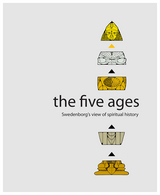4 books by Johnson, P.L.

Palmer O. Johnson
University of Minnesota Press
Curricular Problems in Science at the College Level was first published in 1930. Minnesota Archive Editions uses digital technology to make long-unavailable books once again accessible, and are published unaltered from the original University of Minnesota Press editions.
[more]

Aspects of Land Grant College Education
With Special Reference to the University of Minnesota
Palmer Johnson
University of Minnesota Press, 1934
Aspects of Land Grant College Education was first published in 1934. Minnesota Archive Editions uses digital technology to make long-unavailable books once again accessible, and are published unaltered from the original University of Minnesota Press editions.The author here presents a wealth of data pertaining to a group of land grant colleges and universities having more or less similar objectives, in a form that enable the reader to compare the policies of one institution with those of others in the group. The volume is based on official records in the United States office of education, particularly the data collected in the course of its recent survey of land grant institutions, and on additional data assembled by the author himself. The opening chapters, which deal with the financial problems of land grant institutions, include a comparative study of the fiscal policies of five large universities — California, Illinois, Minnesota, Ohio, and Wisconsin. The author then proceeds to an analysis of the libraries of fourteen comparable institutions. One chapter deals with faculty personnel of the University of Minnesota, and the remainder of the book with students — their “migrations” from their home states, the carious types of higher educational institutions they enter, their social and economic characteristics, and their educational history. Also included are extensive tabulations of the occupational destinations and economic status of alumni.
[more]

The Five Ages
Swedenborg's View of Spiritual History
Emanuel Swedenborg
Swedenborg Foundation Publishers, 2009
The Five Ages: Swedenborg’s View of Spiritual History presents a compelling spiritual and psychological history of human evolution. It is a compilation of extracts from the works of the eighteenth-century Swedish philosopher and mystic Emanuel Swedenborg on the subject of the “world ages,” a concept that is found in many different cultures and mythologies. The Greeks and Romans called these epochs the Golden, Silver, Bronze and Iron Ages; Hindu mythology talks of the four yugas; Islam, meanwhile, refers to a pattern of the six major prophets. Similar timeframes appear in Norse, Persian, and Aztec mythology, but nowhere is this theme treated with such detail as in the works of Swedenborg. He divides human history into five biblically based ages: that of Adam, Noah, Moses, Jesus Christ, and a fifth one that is just unfolding, one predicted in the book of Revelation.
The Five Ages brings together passages from over twenty different works by Swedenborg, neatly linking them with an engaging and informative commentary in which P. L. Johnson compares and contrasts Swedenborg’s ideas with those from other cultures, placing them in the context of historical and archaeological knowledge gathered since Swedenborg’s time.
The book is illustrated throughout, featuring thirty helpful and charming black-and-white line drawings. It also contains a bibliography, a subject index, an index of quotations from the works of Swedenborg, and an appendix on “World Age Patterns.”
The Five Ages brings together passages from over twenty different works by Swedenborg, neatly linking them with an engaging and informative commentary in which P. L. Johnson compares and contrasts Swedenborg’s ideas with those from other cultures, placing them in the context of historical and archaeological knowledge gathered since Swedenborg’s time.
The book is illustrated throughout, featuring thirty helpful and charming black-and-white line drawings. It also contains a bibliography, a subject index, an index of quotations from the works of Swedenborg, and an appendix on “World Age Patterns.”
[more]

Modern Sampling Methods
Theory, Experimentation, Application
Palmer Johnson
University of Minnesota Press, 1959
Modern Sampling Methods: Theory, Experimentation, Application was first published in 1959. Minnesota Archive Editions uses digital technology to make long-unavailable books once again accessible, and are published unaltered from the original University of Minnesota Press editions.Of both theoretical and practical use to statisticians and research workers using sampling techniques, this book describes five new multi-stage sampling models. The models are described, compared, and evaluated through a skillfully designed experiment. The number of stages in all five models is the same; the manner in which they differ is in the particular sampling technique applied at each of the several stages. Recommendations are given on the choice of the most suitable model for a given practical situation. A mathematical appendix presents two lemmas that are useful for derivation of sampling formulas in multi-stage sampling.
[more]
READERS
Browse our collection.
PUBLISHERS
See BiblioVault's publisher services.
STUDENT SERVICES
Files for college accessibility offices.
UChicago Accessibility Resources
home | accessibility | search | about | contact us
BiblioVault ® 2001 - 2024
The University of Chicago Press









